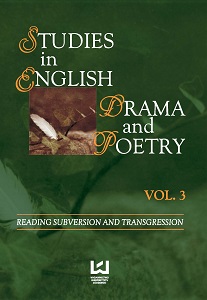The Rite-of-Passage Structure in Medieval and Early Modern Visionary Accounts
The Rite-of-Passage Structure in Medieval and Early Modern Visionary Accounts
Author(s): Jacek Kowzan
Subject(s): British Literature
Published by: Wydawnictwo Uniwersytetu Łódzkiego
Keywords: rite-of-passage structure;medieval and early modern visionary accounts
Summary/Abstract: The aim of this paper is to apply Arnold van Gennep’s and Victor Turner’s conceptual scheme of the rite of passage to medieval and early modern visions of the hereafter. Most of the visionary accounts (e.g., Drythelm’s Vision, Thurkill’s Vision, St. Patrick’s Purgatory) share a great deal of similar material. Usually these are stories about a man who is mysteriously taken to the otherworld during his deep sleep, trance, severe sickness or a similar state which, in Carol Zaleski’s words, is called a near-death experience. Afterwards a visionary is brought back to tell his community about the things he saw. From such a composition, one can work out that visions, in most cases, have a threefold structure of rites de passage: separation (pre-liminal phase), transition (liminal or margin phase) and aggregation (post-liminal phase). A threshold (limen) stage between separation from one state and integration into another is a crucial one as it implicates not only transgression but also transformation of a visionary. The liminal phase is being regarded here as a point of entry and exit between zones of this experience. It also includes the suspension of social roles and, by definition, being “not in control.” On his return, the visionary can be perceived by the community as a messenger or a prophet, depending on the circumstances.
Book: Studies in English Drama and Poetry vol. 3. Reading subversion and transgression
- Page Range: 177-187
- Page Count: 11
- Publication Year: 2013
- Language: English
- Content File-PDF

